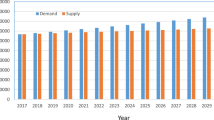Abstract
Student-faculty collaborative clinics, like the Crimson Care Collaborative (CCC), provide primary care access to underserved communities. Affiliated with a community health center, CCC-Chelsea serves a largely immigrant and refugee population. This study aimed to analyze patients’ reported ED use before and after they presented to CCC-Chelsea and whether types of insurance affect ED use. We prospectively surveyed 229 patients presenting to CCC-Chelsea between 2013 and 2019. Patients who presented for two or more visits at least one year apart were included in the study. A two-sided Wilcoxon signed rank test was used to compare reported ED use before and after presenting to CCC-Chelsea, and a Kruskal–Wallis test analyzed the association between ED use and insurance status. Most patients (77.7%) presenting to CCC-Chelsea identified as Hispanic, 70.9% were male, 50.6% of patients reported an income of less than $15,000 yearly, and 30.4% had an income between $15,000–$30,000. Most patients (51.9%) did not specify the type of insurance used, followed by public insurance (36.7%), with the remaining having private or no insurance. Results from our survey showed that patients who returned to CCC-Chelsea reported a decrease in the average number of yearly ED visits after attending CCC-Chelsea (pre-CCC 1.544, post-CCC 0.696, p < 0.001 at the 95% CI). There was no difference in reported average number of ED visits yearly and insurance type (p = 0.579). Patients’ reported ED utilization after accessing care at CCC-Chelsea decreased. Increased access to student-faculty collaborative clinics could reduce ED use in underserved populations.




Similar content being viewed by others
Abbreviations
- CCC:
-
Crimson Care Collaborative
- ED:
-
Emergency Department
- CI:
-
Confidence Interval
References
Petterson, S. M., Rabin, D., Phillips, R. L. J., Jr., Bazemore, A. W., & Dodoo, M. S. (2009). Having a usual source of care reduces ED visits. American Family Physician., 79(2), 94.
Hemba, K. E., & Plumb, J. (2011). JeffHOPE: The development and operation of a student-run clinic. Journal of Primary Care & Community Health, 2(3), 167–172.
An, M., Laks, K., & Long, N. (2019). Uninsured with diabetes: How student-run free medical clinics are filling the gap. Clinical Diabetes, 2019, cd180111. https://doi.org/10.2337/cd18-0111
Sun, R., Zeynal, K., &Wong, H. (2018). Trends in hospital emergency department visits by age and payer, 2006–2015. Healthcare cost and utilization project, March 2018. Retrieved from https://www.hcup-us.ahrq.gov/reports/statbriefs/sb238-Emergency-Department-Age-Payer-2006-2015.jsp
Kramer, N., Harris, J., & Zoorob, R. (2015). The impact of a student-run free clinic on reducing excess emergency department visits. Journal of Student-Run Clinics, 1(1). Retrieved from https://journalsrc.org/index.php/jsrc/article/view/3
Thakkar, Anjali, Chandrashera, Poojra, Wang, Wei, et al. (2019). Impact of a student-run clinic on emergency department utilization. Family Medicine, 51(5), 420–423.
Campbell, D. J., Gibson, K., O’Neill, B. G., & Thurston, W. E. (2013). The role of a student-run clinic in providing primary care for Calgary’s homeless populations: A qualitative study. BMC Health Services Research. https://doi.org/10.1186/1472-6963-13-277
Trumbo, S. P., Schuering, K. M., Kallos, J. A., et al. (2018). The effect of a student-run free clinic on hospital utilization. Journal of Health Care for the Poor and Underserved, 29(2), 701–710. https://doi.org/10.1353/hpu.2018.0053
Simpson, S., & Long, J. (2007). Medical student-run health clinics: Important contributors to patient care and medical education. Journal of General Internal Medicine, 22(3), 352–356.
Berman, R., Elman, S., Srivastava, P., Knudsen, J., Huppert, L., Dempsey, K., et al. (2014). Patient experience of care in student-faculty collaborative practice. Patient Experience Journal., 1(2), 20–25.
Harris, P. A., Taylor, R., Thielke, R., Payne, J., Gonzalez, N., & Conde, J. G. (2009). Research electronic data capture (REDCap)—A metadata-driven methodology and workflow process for providing translational research informatics support. Journal of Biomedical Informatics, 42(2), 377–381. https://doi.org/10.1016/j.jbi.2008.08.010
Caldwell, N., Srebotnjak, T., Wang, T., & Hsia, R. (2013). “How much will I get charged for this?” Patient charges for top ten diagnoses in the emergency department. PLoS ONE, 8(2), e55491. https://doi.org/10.1371/journal.pone.0055491
Dvoracek, J. J., Cook, K. M., & Klepser, D. G. (2010). Student-run low-income family medicine clinic: Controlling costs while providing comprehensive medication management. Journal of the American Pharmacists Association, 50(3), 384–387. https://doi.org/10.1331/JAPhA.2010.09058
Sarver, J. H., Cydulka, R. K., & Baker, D. W. (2002). Usual source of care and nonurgent emergency department use. Academic Emergency Medicine, 9(9), 916–923. https://doi.org/10.1197/aemj.9.9.916
Sack, D. E., Chakravarthy, R., Gerhart, C. R., et al. (2021). Emergency department use among student-run free clinic patients: A cross-sectional study. Journal of General Internal Medicine, 36(3), 830–832. https://doi.org/10.1007/s11606-020-05743-z
Modi, A., Fascelli, M., Daitch, Z., & Hojat, M. (2016). Evaluating the relationship between participation in student-run free clinics and changes in empathy in medical students. Journal of Primary Care & Community Health, 8(3), 122–126. https://doi.org/10.1177/2150131916685199
Acknowledgements
The John D. Stoeckle Center for Primary Care Innovation, located at the Massachusetts General Hospital, has been generously supporting the Crimson Care Collaborative. Statistical consultations were provided by Harvard Catalyst and statistical tests were run by Jane Rhee. This project was funded by the Harvard College Research program.
Funding
The John D. Stoeckle Center for Primary Care Innovation, located at the Massachusetts General Hospital, has been generously supporting the Crimson Care Collaborative. This project was funded by the Harvard College Research program.
Author information
Authors and Affiliations
Corresponding author
Ethics declarations
Conflict of Interest
None.
Additional information
Publisher's Note
Springer Nature remains neutral with regard to jurisdictional claims in published maps and institutional affiliations.
Rights and permissions
Springer Nature or its licensor holds exclusive rights to this article under a publishing agreement with the author(s) or other rightsholder(s); author self-archiving of the accepted manuscript version of this article is solely governed by the terms of such publishing agreement and applicable law.
About this article
Cite this article
Abdelwahab, R., Abdelwahab, S., Hallman, M. et al. Student Faculty Collaborative Clinics Influence on Emergency Department Use. J Community Health 48, 18–23 (2023). https://doi.org/10.1007/s10900-022-01138-9
Accepted:
Published:
Issue Date:
DOI: https://doi.org/10.1007/s10900-022-01138-9




